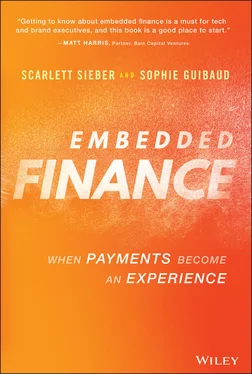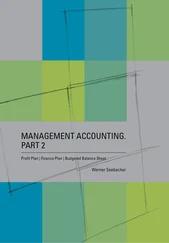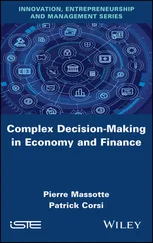Of course, as with most rules, there is an exception. One such exception is a company known as Wakam. Formally known as La Parisienne Assurances, Wakam is an example of an incumbent that has seen success in digitizing its services. According to its LinkedIn page, 8 Wakam “is a digital-first insurance company that creates white-label, tailor-made and embedded insurance solutions for its distributor partners and clients via its high-tech Plug & Play platform.” Wakam has been in the market for a handful of years and now is one of the most advanced in terms of digitization and its ability to plug into external players. In some cases, Wakam is faster at doing this than the insurtechs that are known to compete with them. What makes Wakam different from the other incumbents who have pursued this path with somewhat limited success? Wakam was able to switch all of its technology infrastructure to API-first, which is game-changing and allows them to do a lot more with third parties faster, in a shorter period of time. As Florian Graillot states, “An insurance company, which is running close to 100% of its activity on the state-of-the-art IT system is quite unique, and I believe that this is the reason why there is an ability to gain market share.” As of 2020, according to LinkedIn, 9 Wakam was among one of the top 20 P&C insurers in France.
From those early entrants into insurtech, a few companies are successful, but most are struggling. Because of the struggle, there is a real play for embedded insurance, where we can expect to see adjacent players to the early vision start to push insurance products in the customer journey in a natural way, making it easier for the end customer to understand the value proposition. As Graillot puts it:
The core value of embedded insurance is education. When it comes to insurance, for most customers, it's a requirement to have insurance policies for your home, your car, and in many countries, your health. Otherwise, it's not really clear why people should pay for an insurance product. By embedding this kind of product in the same journey they are already engaging with makes it obvious, and the value proposition is really clear, which will result in a higher conversion rate.
As we will share many times throughout this book, the focus on an incredible customer experience is absolutely crucial. This may sound like fluff or something easy to do, but it's quite hard to do well. The same issues that arose in banking with the emergence of neobanks and others applies to the insurance space as well. Graillot discussed the importance of the user experience, saying:
We were running a due diligence on a health insurance startup, and we were having a look at the mobile apps for insurance, and it was quite surprising because almost all of them, both on iOS and Android, were below three stars out of five. It may appear very easy to achieve a great customer experience but the reality is that it's really tough. We increasingly believe that there is something around the product itself, the user experience that insurtech can deliver at scale and better than the insurance company themselves.
As mentioned earlier, one of the important consequences of the 2008 financial crisis was setting up the conditions for fintech to flourish. Technology companies could now offer services previously only available from regulated financial services entities. The growing use of e-commerce, accelerated by the adoption of mobile internet, increased the need for financial services available literally at consumers’ fingertips.
The two areas where new companies first made inroads into banking were payments and lending. PayPal, arguably the first big “fintech” that the world became accustomed to, founded in 1999, was already invading banks’ territory by enabling payments online. While there were many other payments startups that have had an impact post-PayPal, the next big shift happened in the mid-2000s with the several new lending startups. Prosper (founded 2005) and Lending Club (2006) were well positioned to take over unsecured personal loans as nearly every bank pulled back from this endeavor that brought much risk and little profit. Banks held back on lending even as economic activity increased post-recession and the demand for loans grew from both small businesses and consumers. Regulations greatly increased on banks, making lending to these customers more complex and technically challenging. Continued low interest rates also made lending less enticing to banks (and saving less enticing to consumers).
Founded: 2006
Market cap: $3 billion
Number of employees: 1,500
Lending Club was founded as a peer-to-peer lending service. Investors would fund loans from borrowers, and Lending Club managed the underwriting and risk. When the credit market collapsed in 2008, Lending Club found itself in demand for personal loans that would otherwise be difficult to obtain as banks were turning away consumers who didn't match their credit profiles. By December 2019, Lending Club had loaned $53.5 billion and was the largest provider of personal loans in the US.
Over time, Lending Club's investor mix moved to institutions rather than individuals, with banks taking the largest role. The company fared poorly after going public, losing 90% of its value in the four years after its IPO, and appeared to have lost its way. Lending Club began as a replacement for banks, then was a vehicle for banks to return to personal lending, and finally became a bank itself. Lending Club bought Boston-based Radius Bank, known for its fintech-forward focus, and now seeks to reverse its fortunes through more traditional avenues.
The phenomenon of new companies, soon to be known as fintechs, taking over individual functions previously only performed by banks became known as the unbundlingof banks. Banks offer a dizzying array of different products and services. This concept was once a selling point, that an individual or a business could get every product and service related to their financial lives in one place. They were built to be the one-stop shop for your financial needs. Checking and savings accounts, mortgages, credit cards, wealth management and investing—the list goes on, and your local bank can generally do it all. Before fintech, banks competed with other banks on price, and rates, and in some cases geographical convenience, but the products were generally all the same.
The rise of fintech makes sense when you sit back and think about it. How could a single bank with a limited technology budget be expected to create a dozen first-class financial products serving all their customers in a customized way? Add to this that the thousands of community banks in the US lacked—and generally still lack—the technological resources to create top-quality digital products. While they have an abundance of data that should enable them to tailor their offerings, they typically don't have the technology or resources to extract the key pieces of data. Each bank is reinventing the wheel, with thousands of banks each building the same products in parallel and competing with the bank down the street, often while having the same core providers powering them. In general, bank products are generic. You and your neighbor may have very different financial situations, but you are both using the same financial products.
Technology companies operate very differently. These companies are skilled at customizing solutions and offering bespoke options based on the sophisticated use of data about their customers. When this is applied to financial services, the result is an influx of fintech companies specializing in one service that they believe they can do better than anyone else. By offering what they think is a best-in-class product or service, they can own that piece of the pie. This “unbundling” applied to all parts of the ecosystem from international transfers (Wise), investing (Nutmeg), to lending (Funding Circle). To start out with, all of these companies focused on delivering a unique and smooth experience for this single service only.
Читать дальше












